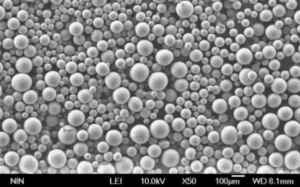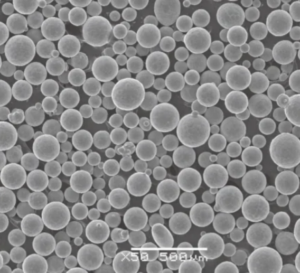概要 バインダージェット3Dプリンティング
バインダージェット3Dプリンティング(BJ3DP)は、最先端の積層造形プロセスであり、複雑で高強度の金属パーツを大規模に製造する能力で際立っています。他の3Dプリンティング技術とは異なり、バインダージェットは材料を溶かす必要がないため、生産時間の短縮、エネルギー消費の低減、幅広い材料(特に金属粉末)への対応が可能です。
この技術は、精度、効率、材料の柔軟性が重要な産業で特に有利です。航空宇宙、自動車、さらにはヘルスケアに至るまで、Binder Jet 3Dプリンティングは、複雑な金属部品を製造するための費用対効果が高く、スケーラブルなソリューションを提供することで、波紋を広げています。
バインダージェット3Dプリンティングの科学
バインダー・ジェットは比較的単純な原理で作動する。液状の接着剤であるバインダーを、パウダー・ベッド上に選択的に層ごとに堆積させる。バインダーが塗布された部分は硬化して希望の形状になるが、周囲のパウダーは緩いままなので再利用が可能である。対象物が完全に形成されると、焼結などの後処理工程を経て、最終的な密度と強度が得られる。
バインダージェット3Dプリンティングの仕組み
- ステップ1:パウダーを重ねる:金属粉末の薄い層は、ビルド・プラットフォーム全体に広げられる。
- ステップ2:バインディング:プリントヘッドが粉末に選択的にバインダーを付着させ、部品の形状を形成する。
- ステップ3:繰り返し:この工程は、部品全体が出来上がるまで、層ごとに繰り返される。
- ステップ4:養生:部品を放置して硬化させ、バインダーを固化させる。
- ステップ5:焼結:最終段階では、部品を炉で加熱して粉末粒子を融合させ、望ましい機械的特性を実現する。
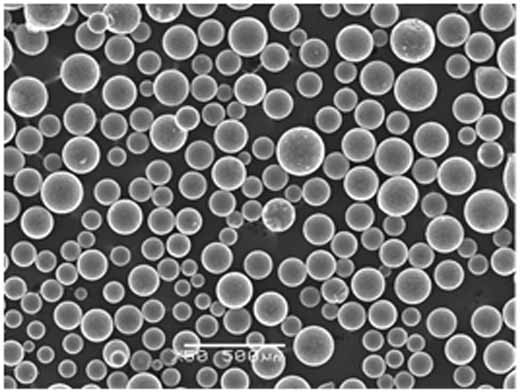
バインダージェット3Dプリンティングの主な特徴
| 特徴 | 説明 |
|---|---|
| 素材の多様性 | ステンレス、チタン、インコネルなど、幅広い金属粉末に対応。 |
| スピード | 材料を溶かす必要がないため、他の金属3Dプリント方法よりも高速。 |
| 費用対効果 | エネルギー消費量が少なく、粉体の再利用が可能なため、運転コストが低い。 |
| 表面仕上げ | 一般的に、滑らかな仕上がりにするためには後処理が必要。 |
| 部品強度 | 焼結後の部品は従来品と同等。 |
| スケーラビリティ | 複数の部品を同時に生産するのに適している。 |
の利点 バインダージェット3Dプリンティング
- 生産効率:バインダージェッティングは、SLM(Selective Laser Melting:選択的レーザー溶融)のような方法と比較して、より速く、より少ないエネルギーを消費するため、大規模生産に最適です。
- 素材の柔軟性:スチール、アルミニウム、セラミックなど、さまざまな金属粉を使用できるため、さまざまな産業で多用途に使用できる。
- 費用対効果:必要なエネルギーが少なく、未結合のパウダーを再利用できるバインダージェッティングは、他の3Dプリント方法よりも経済的な場合が多い。
- 環境への影響:この方法は、高エネルギーのレーザーや電子ビームを使用しないため、廃棄物の発生が少なく、二酸化炭素排出量も少ない。
バインダージェット3Dプリンティングで使用される特定の金属粉末
バインダージェッティングは、様々な金属粉に対応できます。以下では、いくつかの具体的なモデルをご紹介します:
| 金属粉モデル | 説明 |
|---|---|
| 316Lステンレス鋼 | 優れた耐食性と機械的特性で知られ、海洋や医療用途に最適。 |
| 17-4 PHステンレス鋼 | 高い強度と硬度を持ち、航空宇宙や軍事分野で広く使用されている。 |
| Inconel 625 | 耐高温性に優れたニッケル基超合金で、航空宇宙産業でよく使用される。 |
| Inconel 718 | もうひとつのニッケル基合金は、酸化や腐食に非常に強く、過酷な環境に適している。 |
| コバルト・クロム | 耐久性と生体適合性に優れ、歯科や整形外科のインプラントに最適。 |
| 銅 | 優れた電気伝導性と熱伝導性を持ち、電子機器や熱交換器に使用される。 |
| チタン Ti6Al4V | 軽量で高強度、耐食性に優れ、航空宇宙や医療用インプラントによく使用される。 |
| アルミニウム AlSi10Mg | 軽量で耐久性があり、軽量化が重要な自動車部品や航空宇宙部品に最適。 |
| ブロンズ | 耐摩耗性と低摩擦で知られ、ベアリングやブッシュによく使われる。 |
| タングステン | 高密度で耐熱性があり、航空宇宙分野など高い熱安定性が要求される用途に適している。 |
バインダージェット3Dプリンティング粉末の組成
| 金属粉 | 主要コンポーネント | プロパティ |
|---|---|---|
| 316Lステンレス鋼 | 鉄、クロム、ニッケル、モリブデン | 高耐食性、良好な溶接性。 |
| 17-4 PHステンレス鋼 | 鉄、クロム、ニッケル、銅 | 高強度、良好な硬度、耐食性。 |
| Inconel 625 | ニッケル、クロム、モリブデン、ニオブ | 高温強度、耐食性に優れる。 |
| Inconel 718 | ニッケル、クロム、鉄、ニオブ、チタン | 耐酸化性、高温安定性。 |
| コバルト・クロム | コバルト、クロム、モリブデン | 生体適合性、耐摩耗性、高強度。 |
| 銅 | 銅 | 高い電気伝導性と熱伝導性。 |
| チタン Ti6Al4V | チタン、アルミニウム、バナジウム | 軽量、耐食性、生体適合性。 |
| アルミニウム AlSi10Mg | アルミニウム、シリコン、マグネシウム | 軽量で機械的性質が良い。 |
| ブロンズ | 銅、錫 | 低摩擦、耐摩耗性、耐腐食性。 |
| タングステン | タングステン | 高融点、高密度、高強度。 |
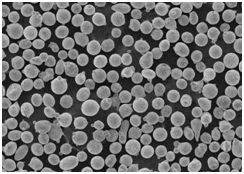
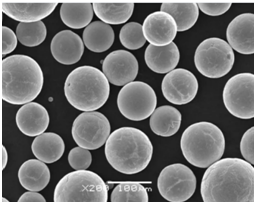
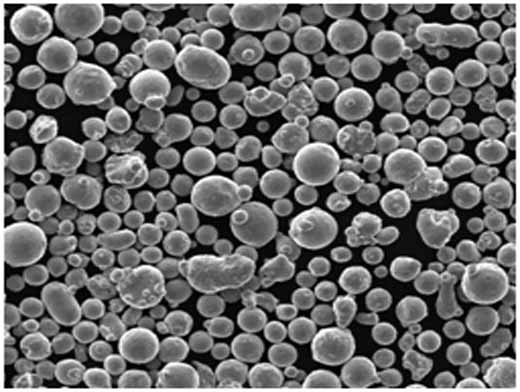
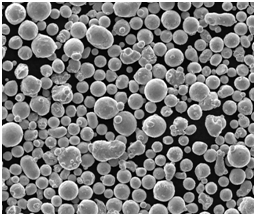

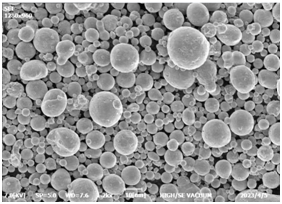
応用例 バインダージェット3Dプリンティング
バインダージェッティングは様々な産業で使用されており、それぞれの金属粉末モデルは明確な目的をもっています。
| 産業 | 申し込み | 金属粉モデル |
|---|---|---|
| 航空宇宙 | エンジン部品、タービンブレード | インコネル625、インコネル718 |
| 自動車 | 軽量部品、プロトタイプ | アルミニウム AlSi10Mg, チタン Ti6Al4V |
| メディカル | 整形外科用インプラント、手術器具 | チタン Ti6Al4V、コバルトクロム |
| マリン | 耐食性部品 | 316Lステンレス鋼 |
| エレクトロニクス | ヒートシンク、コネクター | 銅 |
| ミリタリー | 武器部品、防具 | 17-4 PHステンレス鋼 |
| エネルギー | タービンブレード、原子力部品 | インコネル625, タングステン |
| ジュエリー | カスタムメタルジュエリー | ブロンズ、コバルト・クロム |
| インダストリアル | ベアリング、ブッシュ | 青銅、316Lステンレス鋼 |
| 建設 | 構造部品、継手 | 316L ステンレス鋼、アルミニウム AlSi10Mg |
金属粉末の仕様と規格
バインダージェット3Dプリンティングで使用される金属粉末の仕様、サイズ、規格を理解することは、最終製品が要求される品質と性能の指標を確実に満たすために極めて重要です。
| 金属粉モデル | 粒子径(ミクロン) | 密度 (g/cm³) | 焼結温度 (°C) | 規格 |
|---|---|---|---|---|
| 316Lステンレス鋼 | 15-45 | 7.9 | 1250-1400 | A276, A240 |
| 17-4 PHステンレス鋼 | 20-53 | 7.7 | 1200-1300 | AMS 5604、ASM A564 |
| Inconel 625 | 15-45 | 8.4 | 1250-1400 | アストレムB443、B446 |
| Inconel 718 | 15-53 | 8.19 | 1250-1400 | AMS5596、ASM B637 |
| コバルト・クロム | 10-45 | 8.3 | 1150-1350 | ASTM F75 |
| 銅 | 15-45 | 8.96 | 1080-1125 | ASTM B152 |
| チタン Ti6Al4V | 20-53 | 4.43 | 1250-1400 | ASM1472、AMS4911 |
| アルミニウム AlSi10Mg | 20-63 | 2.67 | 555-630 | EN 1706、ISO 3522 |
| ブロンズ | 10-45 | 8.7 | 900-950 | ASTM B505 |
| タングステン | 5-45 | 19.3 | 1500-1700 | ASTM B777 |
バインダージェット3Dプリンティング:長所と短所
バインダージェット3Dプリンティングの利点と限界を十分に理解するには、長所と短所を比較検討することが不可欠です。
| メリット | デメリット |
|---|---|
| スピード:迅速な生産プロセス | 後処理:高密度化のための追加ステップが必要 |
| 素材の柔軟性:使用可能な粉末の範囲が広い | 表面仕上げ:しばしば二次加工が必要 |
| 費用対効果:低運用コスト | 強さ:適切な焼結を行わないと、部品の密度が低くなることがある。 |
| スケーラビリティ:大量生産に適している | 多孔性:他の方法と比較して空隙率が高い可能性 |
| 環境への影響:廃棄物の発生が少ない | 設計上の制約:粉末の流動性と層の接着性による制限 |
金属粉末のトップサプライヤー バインダージェット3Dプリンティング
バインダージェット3Dプリンティングの成功には、高品質の金属粉末の入手が不可欠です。以下は、トップサプライヤーとその価格詳細です。
| サプライヤー | メタルパウダーモデルあり | 価格帯(米ドル/kg) | 所在地 |
|---|---|---|---|
| ヘガネスAB | 316Lステンレス鋼、17-4 PHステンレス鋼 | 50-100 | スウェーデン |
| GKNアディティブ | インコネル625、インコネル718 | 200-400 | アメリカ |
| カーペンター添加剤 | チタン Ti6Al4V、コバルトクロム | 250-500 | アメリカ |
| サンドビック・オスプレイ | アルミニウム AlSi10Mg, 青銅 | 60-150 | 英国 |
| LPWテクノロジー | タングステン、銅 | 100-250 | 英国 |
| AP&C | チタンTi6Al4V、インコネル718 | 300-600 | カナダ |
| テクナ | アルミニウム AlSi10Mg, 銅 | 50-200 | カナダ |
| アルカムAB | コバルトクロム、チタン Ti6Al4V | 200-450 | スウェーデン |
| エラスティール | 316Lステンレス鋼、青銅 | 80-180 | フランス |
| パイロジェネシス | タングステン、インコネル625 | 150-300 | カナダ |
バインダージェット3Dプリンティングと他の3Dプリンティング技術の比較
生産ニーズにバインダージェッティングを検討する場合、選択的レーザー溶融(SLM)や電子ビーム溶融(EBM)など、他の一般的な3Dプリンティング手法と比較することが不可欠です。
| テクノロジー | スピード | 素材範囲 | 表面仕上げ | コスト | 典型的な用途 |
|---|---|---|---|---|---|
| バインダー・ジェット | 速い | 広い(金属、セラミック) | 粗い、後処理が必要 | 低い(省エネのため) | 大量生産、プロトタイピング |
| 選択的レーザー溶融(SLM) | 中程度 | 金属 | スムーズ、詳細 | 高い(エネルギー使用による) | 航空宇宙、医療用インプラント |
| 電子ビーム溶解(EBM) | 遅い | 限定的(主に金属) | 粗いが強度は高い | 高い(設備コストのため) | 航空宇宙、カスタム部品 |
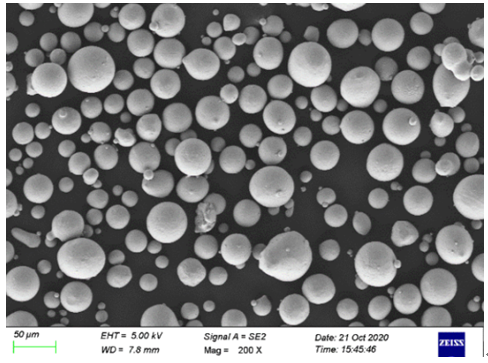
よくある質問
| 質問 | 回答 |
|---|---|
| バインダージェット3Dプリンティングで使用できる材料は何ですか? | ステンレス鋼、チタン、インコネルなど、さまざまな金属、セラミック、複合材料が使用できる。 |
| バインダージェッティングは、他の金属3Dプリント方法よりも速いのですか? | そう、材料を溶かす必要がないため、一般的に工程が大幅に短縮される。 |
| バインダージェット3Dプリンティングは丈夫な部品を作ることができますか? | そう、適切な焼結を行えば、従来の製造方法に匹敵する強度を得ることができる。 |
| バインダー・ジェットを使用する主な業界は? | 航空宇宙、自動車、医療、エレクトロニクス産業は、この技術を使用する主要分野の一部である。 |
| バインダージェッティングでは必ず後処理が必要ですか? | 一般的にはそうです。焼結や浸潤のような後処理は、部品の機械的特性と仕上げを向上させるために必要である。 |
| バインダージェットと他の方法とのコスト比較は? | 必要なエネルギーが少なく、粉体を再利用できるため、一般的にコスト効率が高い。 |
